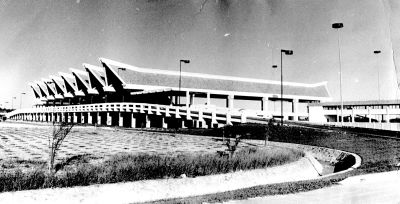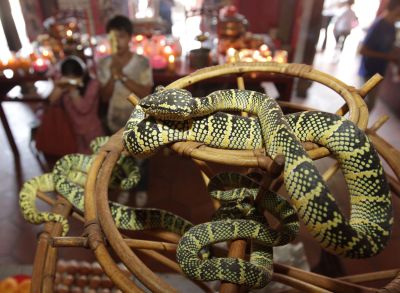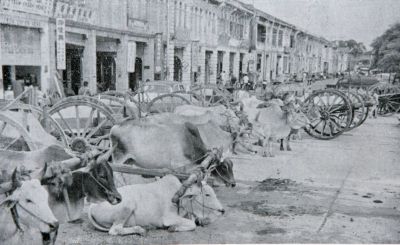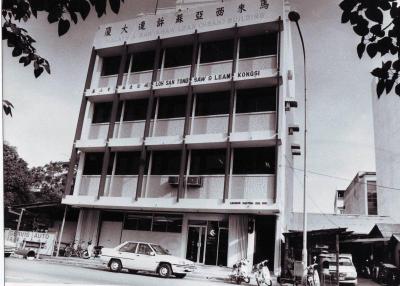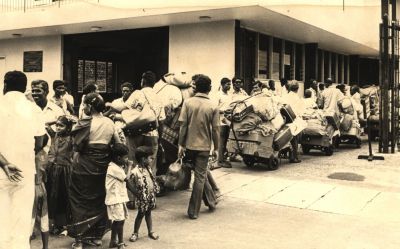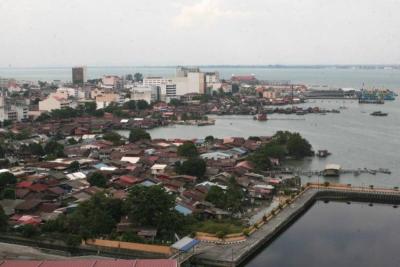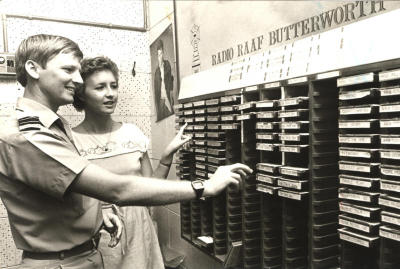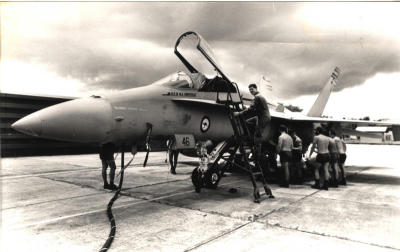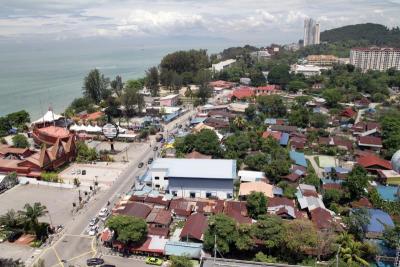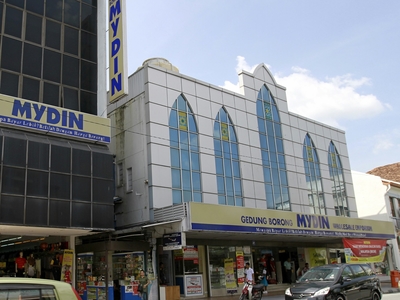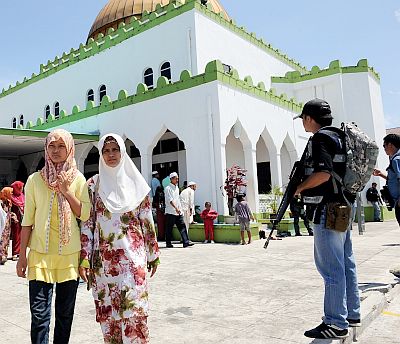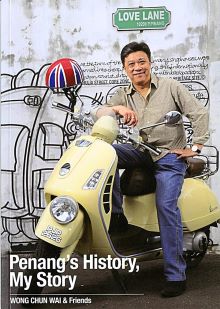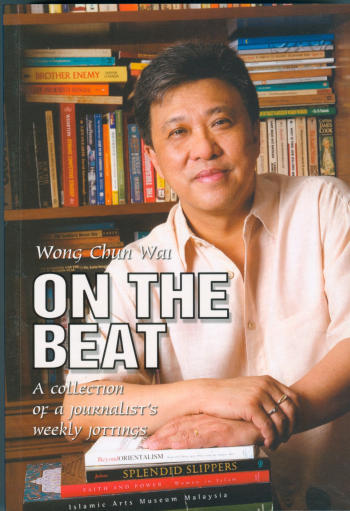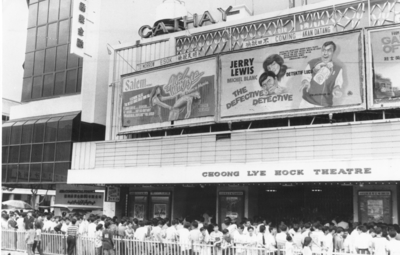 Old and new: Cathay, also known as the Choong Lye Hock Theatre,
Old and new: Cathay, also known as the Choong Lye Hock Theatre,
stood as a cinema for more than 35 years, but today, it houses a Mydin
supermarket (pic below).
FOR just 40sen, many of us got to buy a third-class ticket to watch a movie. A third-class ticket meant sitting on the first three rows of a cinema with our necks craned to focus on the giant screen in front.
And you can imagine the discomfort if you were seated on the extreme left or right of the first row.
In some cinemas, the class distinction was further aggravated by the wooden third-class seats as cushioned seats were only for first and second class, as well as balcony seats also known as “upstairs”.
One cannot but feel that cinema operators wanted to punish us for just being too poor or too cheapskate.
Welcome to the 1960s and 1970s — when going to the movies was a real treat, a weekend reward from your parents.
Remember, those were the days when most families were big, and it would be extremely expensive to buy first class or balcony seats for the entire family, unless you are well-to-do.
Unlike today’s cineplexes, the seating arrangement was divided into first, second and third classes, and ticket prices varied accordingly. The most expensive tickets were for the “upstairs” seats, where there was even a side entrance to the cinema bar.
Like the English theatre, there would be an interval or break midway into the movies, for the cinema-goers to buy drinks.
In some cinemas, a woman would walk around the aisles selling ice-cream, which was really quite amazing, considering how strict modern cineplexes are about food consumption in cinema halls.
Another unique touch to cinema-going back then, was the ticket inspector who would come by once the show has started. With torchlight in hand, they would make sure that you are sitting where you should be.
Well, when the show is not packed, it is quite common for the third-class patrons to quietly move to first class.
Back in those days, most of the children would go to the movies, especially the evening shows, with sweaters as they were not accustomed to air-conditioning.
But some cinemas in Penang, even until the late 1970s, did not even have air-conditioning, and only used giant fans to cool the premises, which must be hard to imagine today!
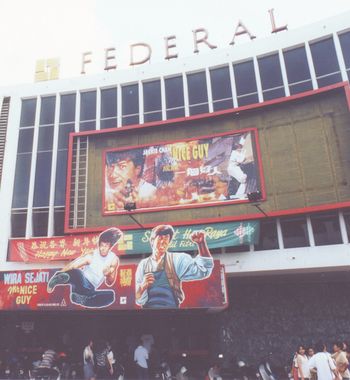 World of flying swordsmen: Federal Cinema in Datuk Keramat Road used to show the latest kung fu and sword-fighting
World of flying swordsmen: Federal Cinema in Datuk Keramat Road used to show the latest kung fu and sword-fighting
flicks from Hong Kong.
The cinema experience was a real outing and we would all be seated way before the show started because we enjoyed the spotlights beaming different colours onto the huge velvet curtain, which would start to part once the movie projector came on.
The first cinema in Penang was the Majestic Theatre, which opened in 1926. It was also named after its owner, the late Khoo Sian Ewe, who was the doyen of the Chinese business community.
It was the first cinema in Penang to screen sound movies, or talkies, in the 1930s. According to reports, it was also known to the locals as the Shanghai Sound Movie Theatre.
The cinemas in those days had an air of grandeur with their distinctive architecture. Every cinema was different, unlike today when you recognise the cinema hall in a cineplex, located in a mall, by a number.
Growing up in Penang, there was plenty to choose from.
Besides the Lido and Globe cinemas at the New World Park at Swatow Lane, which has now become a food court, the English movies would usually be screened at the Cathay and Odeon cinemas along Penang Road.
A movie I remembered watching at the Cathay cinema was Mackenna’s Gold, a 1969 western starring Gregory Peck and Telly Savalas, where the greedy characters shot themselves to death in their mad scramble for gold. The theme song, Old Turkey Buzzard, by Jose Feliciano was a hit.
Cathay, also known as the Choong Lye Hock Theatre, stood as a cinema for more than 35 years, but today, it houses a Mydin supermarket.
My eldest brother, Chun Sang, the only Chinese-educated one among my brothers, made sure that I had a balanced entertainment.
So regularly on Sundays, he would take me on his motorcycle to Federal Cinema, along Datuk Keramat Road, to watch the latest kung fu and sword-fighting flicks from Hong Kong. In those days, they all spoke Mandarin even though the movies were made in Hong Kong.
He opened me up to the amazing world of flying swordsmen with the likes of Wang Yu, David Chiang, Ti Lung, Chen Kuan Tai, Fu Sheng and Lo Lieh.
I was then in primary school, and like the rest of the world, I was swept away by the movies of the legendary Bruce Lee with his unique martial arts skills.
But while I did not mind the action movies, I cringed and protested each time my brother took me to watch the Taiwanese romance movies of Chin Han, Chen Chen, Lin Fong Chiao (the wife of Jackie Chan) and Tien Niu.
These days, when you go to the movies, your choice of knick-knacks is limited by what is sold officially at the cineplex.
But at the Federal, for example, we could have either lok lok (small bits of food on skewers), steamed groundnuts, sotong bakar or barbecued meat buns.
At every cinema, there will always be an Indian man with his tray of salted peanuts and yellow kacang putih.
One item which the cinema-going generation of those days will surely remember is the kuaci or sunflower seeds.
Everyone just ate it throughout the movie, and the shells were simply scattered all over the floor. Which is why there is a long break in between shows as the cleaners have to come in to clear up.
With all the leftover food, the occasional one or two rats running across our feet in the middle of a show was not something strange! Finding a chewing gum stuck on the floor, annoying as it may be, was also common.
The toilets were located in the cinema itself, often towards the front third-class section, so one could actually go and take a quick toilet break.
But as children, we were terrified to go to the toilet alone in the middle of a show. The toilet, with its row of urinals, was huge. Often, we just hold it in, especially if we were watching a horror movie!
My parents widened my mind further by taking me to watch my first Hindi movie — Haathi Mere Saathi (Elephant, My Friend) — about a man who was forced to choose his love for his elephant friends and his wife. It starred Rajesh Khanna Tanuja.
This movie was shown at the Royal cinema at Maxwell Road and to this day, still probably holds the record for being one of the longest-running movies ever shown in local cinemas. It touched the heart of every Penangite, no matter what race, and everyone would have watched it more than once, often leaving in tears because the ending was so sad.
My father, Wong Soon Cheong, who was born in Kuah, Langkawi, laid the foundation for my love of Malay movies, and the works of the legendary P. Ramlee, himself a Penangite. And the one cinema that showed mainly Malay movies was the Paramount at Prangin Road.
As I write this article, I could see that we were really spoilt for choice back then and these were some of the cinemas I recall.
The Capitol, Paramount, Royal and Eastern have all been demolished to make way for new developments. At the New World Park, there were the Lido and the Globe, the latter being a semi-open cinema, which allowed those who did not buy tickets to watch the movie from outside.
Then, of course, there were Odeon cinema (still open) in Penang Road, the Rex cinema (now a home furnishing store) in Burmah Road, the Star cinema (now a lighting shop) in Datuk Keramat Road, the Capitol cinema also at Penang Road, the Gala cinema (defunct) in Aboo Siti Lane, the Majestic cinema (abandoned) in Phee Choon Road, the Sun cinema (discotheque) off Campbell Street, the Metro cinema (now the office of Sculpture at Work) in Perak Road, Movieland (demolished) next to City Bayview Hotel, the Wembly cinema (demolished) in Noordin Street, the Kok Pin cinema (a supermarket now) and the Choong Nam cinema (now a church) in Ayer Itam.
By the Gama Supermarket, which is where Penang Road, Datuk Keramat Road and Brick Kiln Road meet, there used to be an open patch of land where the giant-sized posters promoting the movies were placed. This stretch has now been renamed Jalan Gurdwara after the Sikh temple located in its vicinity.
By the time I was in school, with my parents being more generous with my allowance, I became more addicted to movies.
In the late 1970s, when John Travolta’s Saturday Night Fever reached Penang, I skipped school to make sure I was the first in the queue to buy a ticket. Many young people watched the movies countless times at the Rex cinema just to learn the dance steps.
It was also the era of the Hui Brothers — Sam, Michael and Ricky — with their wacky sense of humour, portraying the struggling lives of the working class in Hong Kong, in their comedy blockbusters made between 1974 and 1981.
Those were our growing-up years as teenagers and taking a girl out on a date meant taking her to watch a movie. It was best and most affordable, if not the healthiest way, to meet members of the opposite sex.
Interestingly enough, men and women were segregated at the ticket counters and the men would always try to get the women to buy tickets for them, provided they did not exceed their quota of four tickets.
The women’s queue was always shorter but I am sure some of the men just wanted to pick up girls by asking for this favour.
And it was also a time when X-rated movies were allowed to be shown. We were too young to be admitted but we could remember the uncles from our neighbourhood looking rather sheepish as they queued up for tickets.
But was it the good old times? I am not sure. The cineplexes are cleaner now, the sound system is better and the seats more comfortable. If you pay more, you even get a blanket with a reclining seat and a cup of soft drink and popcorn.
Gone are the “carpets” of kuaci shells on the floor and scurrying rats are only memories of the past.
The smokers, which we had to tolerate back then, have finally disappeared but are replaced by people who talk or send SMSes on their mobile phones.
And with today’s online booking, who could have imagined that there was a time when scalpers selling over-priced tickets did roaring business each time a blockbuster was screened?



